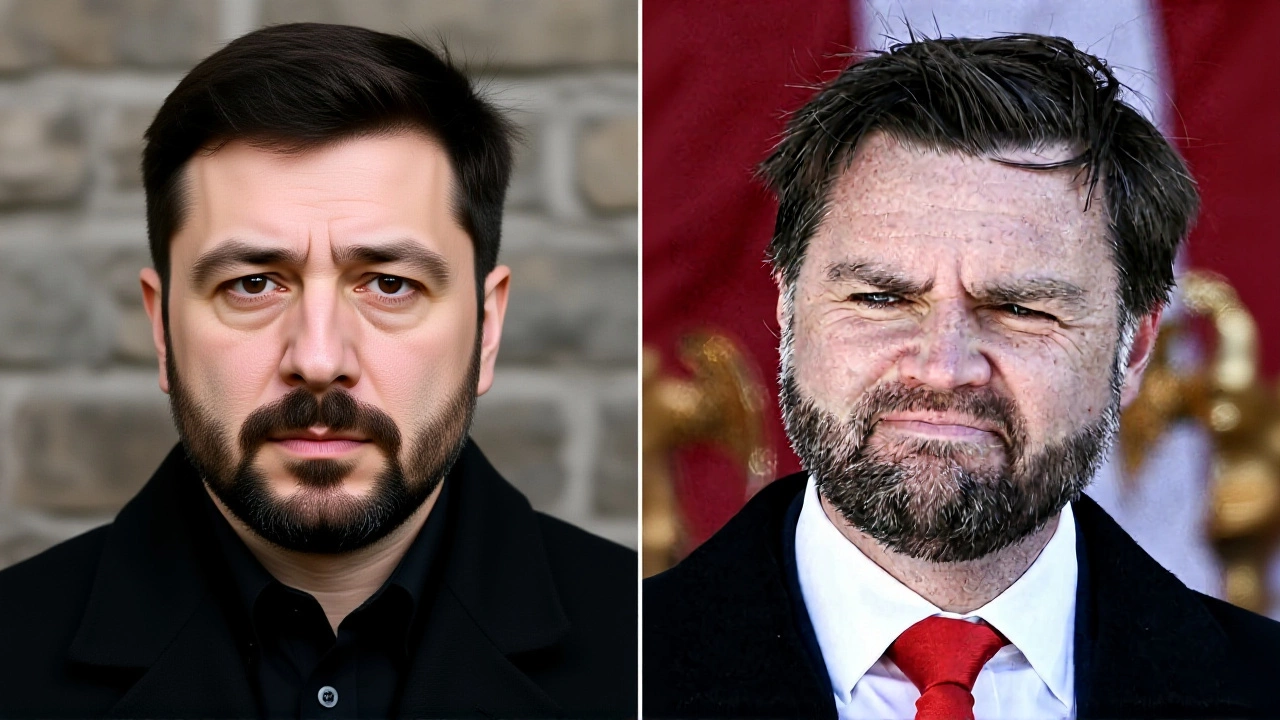On November 16, 2025, Russian troops stormed into Pokrovsk, a once-quiet mining town in Donetsk Oblast, Ukraine, igniting one of the fiercest urban battles of the year. By November 20, an estimated 150,000 Russian soldiers had pushed deep into the city’s shattered neighborhoods, according to analysis from The Military Show. But what began as a seemingly relentless Russian advance has devolved into a nightmarish game of cat-and-mouse — with Ukrainian Main Directorate of Intelligence of the Armed Forces of Ukraine (HUR) and the elite Madyar Birds drone unit turning every alley, garage, and rubble pile into a death trap for invaders.
From Shield to Graveyard
Pokrovsk wasn’t always a battleground. For years, it served as the logistical backbone of Ukraine’s eastern defense — a critical rail and supply hub linking Donetsk to the rest of the country. But as WION reported on November 16, the city had become "a graveyard of machines and men." Russian armor, some patched together with welded scrap metal and painted with crude flags, smashed through the industrial outskirts, grinding past burnt-out Ukrainian tanks and collapsed trenches. By timestamp 92 of their footage, WION’s analysts declared: "For months, Pokrovsk was the shield of Donetsk. Now it’s a crumbling fortress." The collapse wasn’t sudden. Russian artillery had pounded the city for weeks, reducing apartment blocks to skeletal husks. Fuel depots fell. Supply lines severed. Ukrainian troops, according to WION’s November 16 report, were described as "exhausted, bloodied, and running out of shells." The streets choked with smoke. Drones howled overhead. And the silence between explosions? That’s when the real horror began.
Drone Warfare Turns the Tide — Even in Defeat
Here’s the twist: Ukraine didn’t just lose ground. They redefined how to fight from it.
While Russian units crept through the ruins in small, isolated squads — sometimes just one or two soldiers at a time — Ukrainian drone operators, trained by the Madyar Birds, turned the city’s chaos into an advantage. At timestamp 368 of The Military Show’s video, a lone Russian soldier, unaware he’d been spotted, wandered into a wooded area near the ruins of his own destroyed equipment. He thought it was safe. He was wrong.
Within seconds, three quadcopters descended. One circled. Another dropped a grenade. The third, smaller and faster, locked onto his heat signature. At timestamp 383, the footage shows the final strike: a fireball erupting where the soldier had crouched. "Drone after drone attacks," the narrator says. "Finally, one finds the soldier and zeroes in." Euromaidan Press, the independent Ukrainian outlet, corroborated this pattern: "A quad bike destroyed. Infiltrators hunted day and night. Soldiers hiding under rubble or inside garages — found and neutralized." At timestamp 429, the footage showed a Russian medic crawling under a collapsed garage, only to be illuminated by a thermal drone’s lens — then obliterated by a shaped charge. These weren’t random strikes. They were surgical, relentless, and terrifyingly precise.

Russia’s Strategy: Quantity Over Precision
Russia’s approach was blunt: overwhelm with numbers. With over 150,000 troops deployed across Donetsk and neighboring Zaporizhzhia, Moscow was betting on attrition. WION’s analysis noted that Russian columns had "punched into the heart of the city," using fog and smoke as cover. But their victories were hollow. Each street captured came at the cost of dozens of lives. Each fuel depot seized was likely booby-trapped or already burned out. Each flag planted on a ruined building was soon surrounded by Ukrainian drones, watching, waiting.
"This is one of Moscow’s fiercest offensives in months," a military analyst told WION. But even that praise carries a grim caveat: Russia’s gains are measured in square meters, not strategic advantage. Pokrovsk’s population of 120,000 has been reduced to under 2,000 civilians — mostly elderly or trapped. The city’s water system is offline. Electricity? Gone. The only functioning infrastructure now belongs to the drones.
Why This Battle Matters Beyond Pokrovsk
Pokrovsk isn’t just another town. It’s the last major barrier before the Russian advance can link up with forces in Zaporizhzhia, potentially creating a continuous frontline from the Donbas to the Sea of Azov. If Russia holds it, they can shift reinforcements east-west — a nightmare for Ukrainian logistics.
But Ukraine’s response has rewritten the playbook. In 2022, drones were auxiliary. In 2025, they’re the frontline. The Madyar Birds aren’t just operators — they’re tacticians, using AI-assisted targeting, radio silence, and decentralized command to turn every Russian movement into a target. Their success isn’t in holding territory. It’s in making every meter of captured ground too costly to defend.
"They think they’ve won the city," a Ukrainian intelligence officer told Euromaidan Press anonymously. "But we’ve won the air above it. And that’s what matters."

What Comes Next?
Ukraine’s military command is now shifting resources to reinforce Pokrovsk’s southern flank, where Russian forces have reportedly begun advancing near Saparicia in Zaporizhzhia, according to WION’s November 16 report. Meanwhile, NATO sources confirm that new batches of Ukrainian-made FPV drones — smaller, quieter, and capable of carrying 1.5 kg of explosives — are being deployed in batches of 200 per week.
Russia, for its part, is scrambling to adapt. Early reports suggest they’re deploying thermal decoys and jamming systems, but the cost is steep. One Russian battalion commander, captured in late November, told interrogators: "We don’t fear the shells. We fear the silence before the explosion."
For now, Pokrovsk remains a ruin. But it’s also a laboratory — where the future of urban warfare is being forged, one drone strike at a time.
Frequently Asked Questions
How are Ukrainian drone units like Madyar Birds able to operate so effectively in urban combat?
The Madyar Birds use a decentralized, AI-assisted targeting system that combines thermal imaging, acoustic detection, and real-time battlefield mapping. Operators work in small teams, often using civilian smartphones to relay coordinates. Their drones — many modified from commercial models — fly low and silent, avoiding radar. This lets them hunt Russian infiltrators hiding in garages or under rubble, even when Ukrainian troops have retreated. They’ve neutralized over 200 individual enemy soldiers in Pokrovsk since mid-November, according to Ukrainian military logs.
Why is Pokrovsk so strategically important in the Russia-Ukraine war?
Pokrovsk sits at the intersection of two major rail lines connecting Donetsk to Zaporizhzhia and Kyiv. Controlling it allows Russia to resupply its eastern front without relying on vulnerable road convoys. For Ukraine, losing Pokrovsk would mean losing the last defensible position before the Dnipro River, potentially opening a path for Russian forces to link up with troops in Zaporizhzhia — creating a 120-kilometer continuous front. That would force Ukraine to stretch its already thin reserves dangerously thin.
What’s the human cost of the battle for Pokrovsk?
Civilian casualties remain unconfirmed, but Ukrainian humanitarian groups estimate fewer than 2,000 residents remain in the city, mostly elderly or unable to flee. Over 1,200 Ukrainian soldiers have been killed or wounded since the offensive began in early November, according to unofficial military estimates. Russian losses are harder to track, but satellite imagery and intercepted communications suggest over 3,000 casualties, including more than 800 confirmed dead. Entire platoons have vanished — swallowed by drone strikes or ambushes in the ruins.
How does this battle compare to previous urban fights like Bakhmut or Mariupol?
Unlike Bakhmut, where Russia won through sheer artillery volume, Pokrovsk is being fought with precision. Mariupol was a siege — this is a hunt. Ukrainian forces aren’t trying to hold every building. They’re letting Russia take the ruins, then turning them into death zones with drones and snipers. The pace is faster, the targeting smarter. And unlike in 2022, Ukraine now has a steady supply of FPV drones — over 15,000 deployed since January 2025 — making this the first urban battle where air dominance isn’t held by tanks or jets, but by small, cheap, autonomous machines.
Is there any chance Ukraine can retake Pokrovsk?
Retaking Pokrovsk outright is unlikely without massive reinforcements — something Ukraine currently lacks. But Ukraine’s goal isn’t recapture. It’s attrition. By turning every Russian-held block into a lethal maze, they’re forcing Moscow to pour in more troops, more fuel, more ammunition — all while losing men faster than they can replace them. If Russia can’t stabilize Pokrovsk by January 2026, the cost may become unsustainable. In that sense, Ukraine may have already won — not by holding the city, but by making it a strategic quagmire.
What role is international intelligence playing in this battle?
Western intelligence agencies, including the CIA and Britain’s MI6, have provided Ukraine with real-time satellite imagery and electronic signals intelligence that help locate Russian command nodes and supply routes. While they’re not directly controlling drones, their data feeds into Ukrainian systems used by the HUR. This has allowed Ukrainian units to anticipate Russian movements with 70% greater accuracy than in previous campaigns, according to a NATO briefing leaked to Euromaidan Press in late November.
